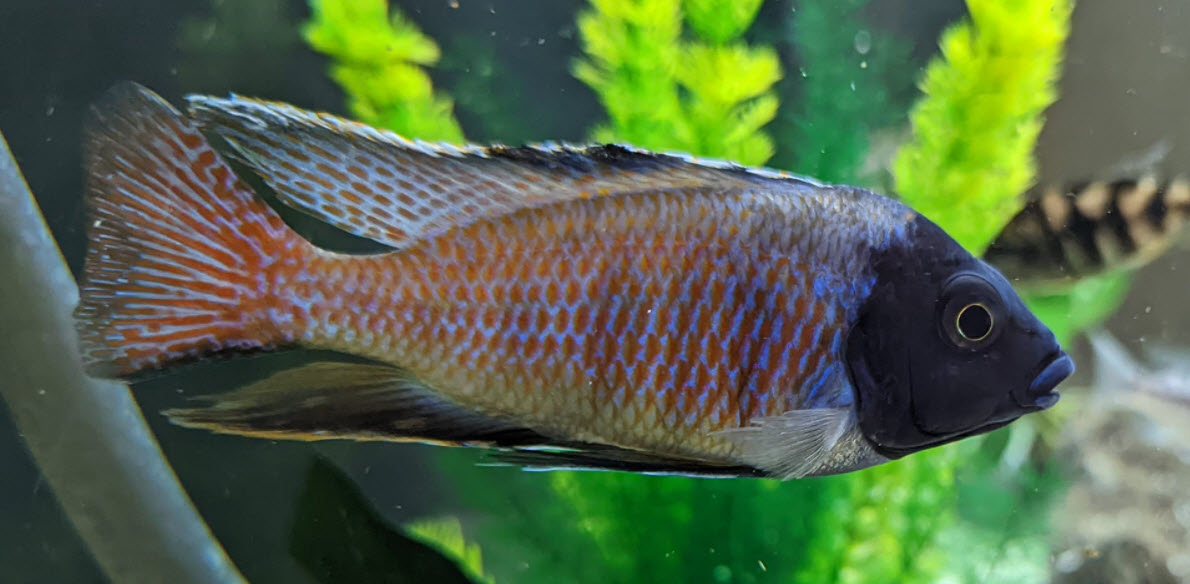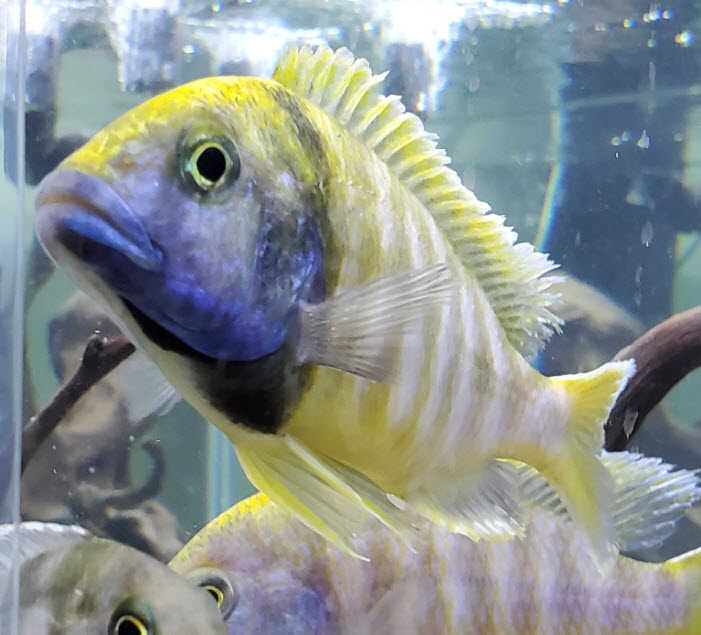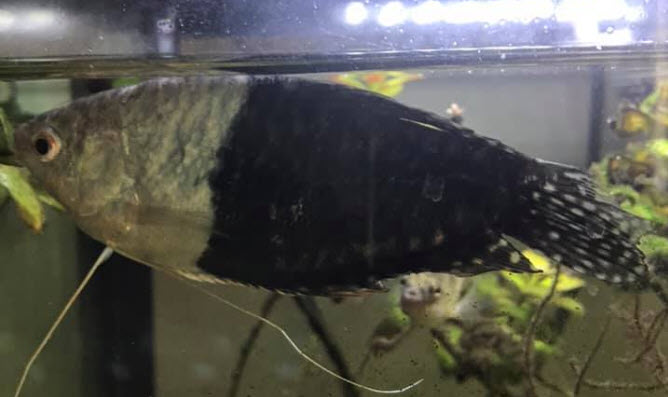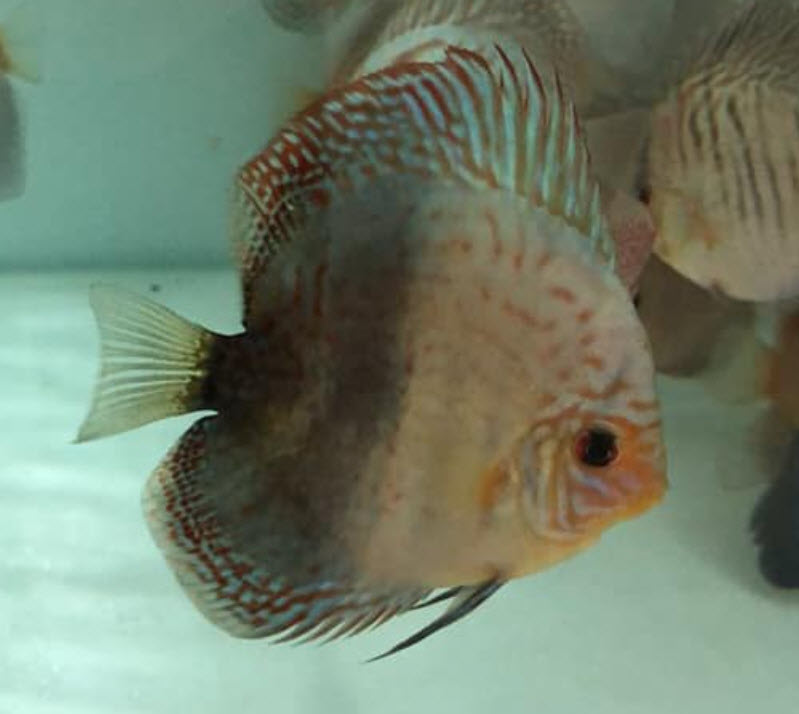
There is a symptom which is very disconcerting to the fish owner but typically relatively harmless. The fish will have a very clearly defined part of its body turn black. Often the discoloration is only on one side of the head. It might then turn back to normal coloration in a day or it might be permanent.
It typically is benign but occasionally it indicates a bigger problem and the fish die. This coloration is called “black-head”, or “black splodge”. It is properly called “segmented melanophore expansion”. It can occur in all fish but seems to be more common in cichlids.

The Science behind Black Head Syndrome
Chromatophores in fish are cells which control the color of the fish. The color black is controlled by a type of chromatophore called a melanophore. Melanophores can change the black color in a fish literally in seconds. If one has ever bred wild discus, one has seen how the black bars on these discus can literally pulse during mating displays. This pulsing is caused by melanophores rapidly expanding and contracting.

In the so called “expanded” or “dispersed” state, black pigment in a structure called a melanosome is widely dispersed in the melanophore cell and the color of the fish is darkened, often considerably. In the “aggregated” state, the melanosomes are gathered into the central bodies of the melanophore cells, and the skin color of the fish is very pale.
This black color level is controlled both by a whole host of hormones and by nerves. The nerves controlling the melanophores have eight branches in a fish. The head, the front of the body, the back of the body, and the tail are each controlled by a left and a right-side nerve pathway. These four centers (eight centers if one considered there is a right and a left center) can be seen on this diagram (from “Nervous Control of Chromatophores in Teleost Fishes”, J. D. Pye, 1964):

Hormones normally control all eight color centers simultaneously. But sometimes disease or trauma can affect one, two or four of the nerve pathways and a strange, banded darkening can occur. A very common presentation is where one side of the head and only the head becomes very dark.
The discus below has the segmented melanophore expansion only on one side of the face. This is a very common presentation which indicates a problem with only one of the eight nerves involved in melanophore expansion.

An infection or trauma in the belly can interfere with the melanophores in the four segments in the back of the body and the tail. This is what happened to this gourami:

Sometimes the damaged nerve pathways still respond to hormones, in which case the banding can come and go very rapidly. Other times the damage is permanent and unchanging.

Pathogens which can cause this include cryptobia, environmental mycobacteriosis (“Fish TB”) and corynebacterium. In addition, some cases are probably simply the fish equivalent of a “pinched nerve”. There is no treatment for segmented melanophore expansion, and it generally will go away on its own. But sometimes there is a pathogen attacking the nerves which spreads and kills the fish. There is not a lot one can do as most of these pathogens have no medication which is really effective.

‘
Return to Diseases Index Page
Return to Protozoan Index Page
.
Aquarium Science Website
The chapters shown below or on the right side in maroon lead to close to 400 articles on all aspects of keeping a freshwater aquarium. These articles have NO links to profit making sites and are thus unbiased in their recommendations, unlike all the for-profit sites you will find with Google. Bookmark and browse!
.

Leave a Reply